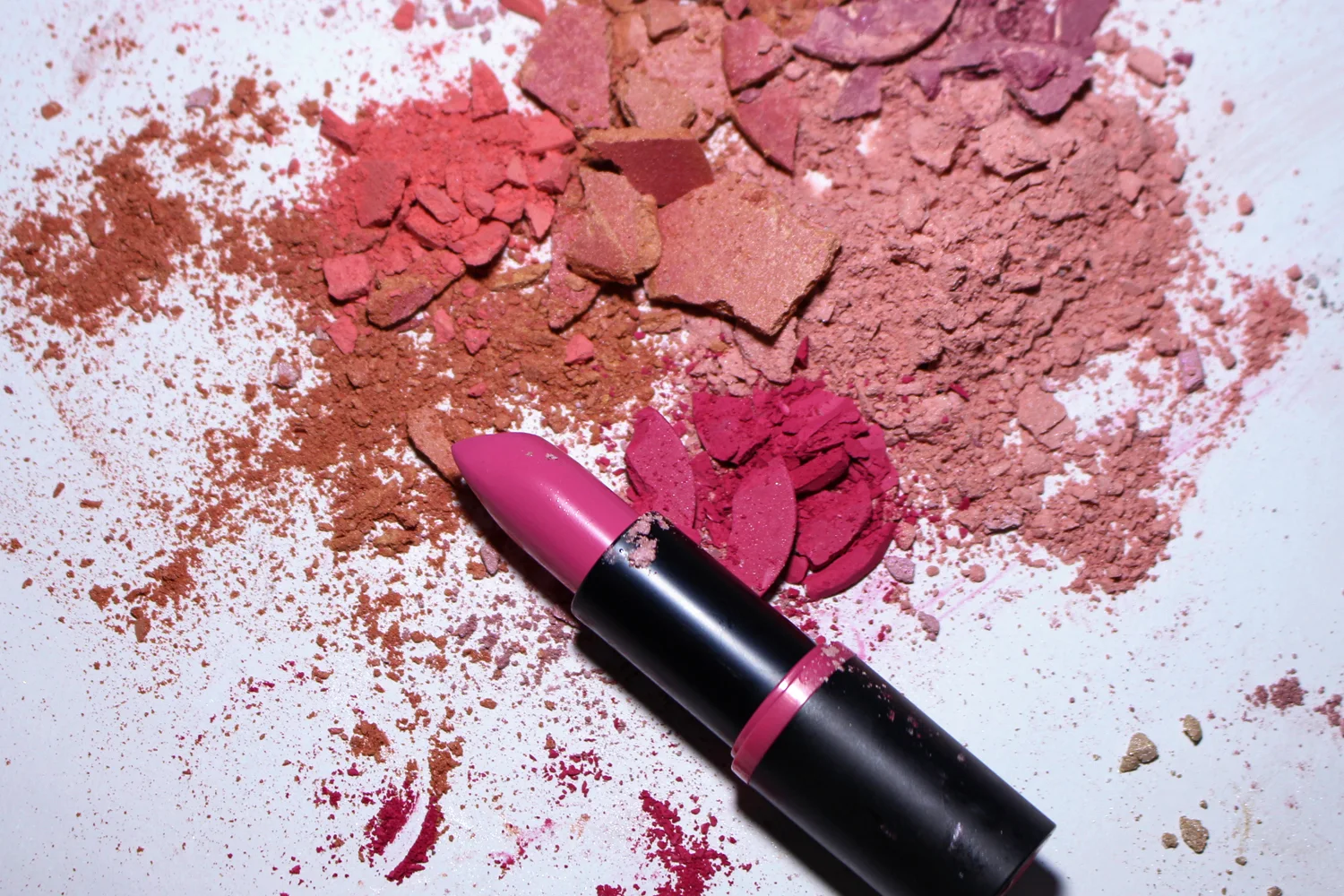Shockingly, a recent study revealed new information about ingredients in your makeup. Researchers tested 231 makeup products sold throughout North America for toxic PFAS and found that over half of the cosmetics tested positive. Among the types of makeup tested, researchers discovered that foundations, waterproof mascara, and long-lasting lipstick accounted for the highest levels of PFAS. Transparency within the cosmetics industry is an increasing concern because 88% of the products tested didn’t clearly state what ingredients were in their products.
The news around PFAS in makeup is problematic. There were up to 82% of PFAS in products like waterproof mascara and 63% in foundations. PFAS stands for perfluoroalkyl and polyfluoroalkyl substances. They are synthetic chemicals that can cause negative health effects for humans and the environment. This is because PFAS cannot break down.
Manufacturers may add PFAS to their cosmetics to keep makeup looking better on the face for longer amounts of time. In addition, PFAS can give skin a shimmery and smooth appearance. As they can last in various environments, PFAS are ideal for “wear-resistant” and “waterproof” formulas. Despite this, the benefits do not override the effects on your health.
If PFAS is a growing matter in makeup, you might be wondering about other harmful ingredients. There seems to be a prevalence of overlooked toxins in cosmetics. The FDA does not have the authority to evaluate every cosmetic. As a result, many makeup brands can get away with adding unsafe ingredients.
Makeup Ingredients
Now is the time to take a look at the back of your makeup labels. Makeup has evolved over time from simple dyes and pigments to complex formulas with synthetics. Makeup also works to include and promote fillers, preservatives, enhancers, and anti-aging properties.
It can be difficult to tell the difference between good and bad ingredients. However, there are some ingredients you should always avoid. Parabens, phthalates, synthetic fragrances, and asbestos/talc are toxic chemicals.
Parabens: You may have seen the term “paraben-free” on shampoos, lotions, lipsticks, and body washes. Parabens work to prevent the growth of bacteria and act as a preservative. Although, these chemicals could mimic the hormone estrogen activity that is linked to breast cancer. Doctors have also discovered parabens in breast tumors. While studies are still determining the full health effects, parabens could be a risk factor for cancer.
Phthalates: As organic chemical compounds, phthalates are also solubilizers. These chemicals can easily dissolve in water. Diethyl phthalates are most common in cosmetics. In products like nail polish, they help make the liquid flexible and chip-resistant. They are also often added to perfumes. Since the FDA regulates all cosmetics, their stance on these chemicals affects your makeup. In 2005, California officially decided to list two types of phthalates as toxic and detrimental to your health.
Synthetic fragrances: Synthetic, or man-made fragrances, are the top ingredients for many perfumes and body products. However, synthetic fragrances may cause contact dermatitis and allergic reactions. If you’re sensitive to fragrances, you might experience burning, stinging, and itching when you applied the product. Continued use may lead you to develop chronic dermatitis. Synthetic fragrances could also worsen asthma conditions.
Asbestos and talc: Talc in cosmetic products is useful for long-wear, absorbing excess oil, and softening makeup. Talcum powder is closely related to asbestos. The two minerals are mined together, and as a result, unregulated talc-based makeup could contain asbestos fibers. Even trace amounts of asbestos in makeup are dangerous and can lead to respiratory illnesses.
Talcum Powder and Ovarian Cancer Risk
The concern about talc and ovarian cancer stems from the fact that talc deposits are sometimes found near asbestos deposits in the earth. Asbestos is a known carcinogen, and there have been worries that talc products might be contaminated with asbestos during the mining process, especially in the past. When talc is not adequately purified, it may contain traces of asbestos fibers, which could increase the risk of cancer.
Research on the association between talc and ovarian cancer has been mixed. Some studies have suggested a possible link, while others have not found a significant connection. The International Agency for Research on Cancer (IARC), which is part of the World Health Organization (WHO), has classified the use of talc-based body powder in the genital area as "possibly carcinogenic to humans." This classification is based on limited evidence and further research is required to establish a definitive causal relationship, if any, between talc use and ovarian cancer.
Looking for Better Makeup
When avoiding these toxic ingredients in your makeup, you should look into purchasing from cleaner makeup brands. Clean makeup fights the toxic beauty industry. This movement informs and teaches you about the problematic chemicals and additives in your beauty. When you shop for clean beauty, you can expect clearer and more transparent labels. Certifications like MADE SAFE can help you identify and choose which products are the most suitable, and healthiest, for you.
Many beauty lines and stores are now offering curated clean beauty products. This provides you with another option in place of more questionable and mainstream cosmetic lines. You can find cleaner beauty products at brand-name stores like Target, Sephora, and Ulta. For more information about the safety of your makeup, download the PDF guide and find out if your favorite products contain asbestos.
Final Thoughts
Clean beauty education allows you to control the quality of your cosmetics. Understanding the difference between toxic and clean ingredients helps establish ingredient standards for consumers. Go through your makeup bag and see which products you should ditch to stay healthier and happier.
Liz









